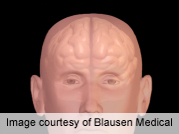
WEDNESDAY, Oct. 10 (HealthDay News) — The brains of people who can’t be hypnotized differ from those who are easily put into a trance, a new study finds.
Researchers used MRI scans to examine activity of three different brain networks in 12 adults who were easily hypnotized and 12 others who weren’t.
The brain networks were: the default-mode network, used when the brain is idle; the executive-control network, used in making decisions; and the salience network, used when deciding if something is more important than something else.
The brain scans showed that both groups had an active default-mode network, but the highly hypnotizable people had greater co-activation between parts of the executive-control network and the salience network, the Stanford University School of Medicine researchers found.
The study was published in the October issue of the journal Archives of General Psychiatry.
Hypnosis, which has been shown to help with brain control over sensation and behavior, can be used to help treat pain, phobias, stress and anxiety, the study authors noted in a Stanford news release.
“There’s never been a brain signature of being hypnotized, and we’re on the verge of identifying one,” study senior author Dr. David Spiegel, a professor of psychiatry and behavioral sciences, said in the news release.
Such a finding would shed light on how hypnosis works, and how it can most effectively be used to treat patients, Spiegel explained.
He said about 25 percent of the patients he sees cannot be hypnotized. “There’s got to be something going on in the brain,” Spiegel concluded.
More information
The American Cancer Society has more about hypnosis.

